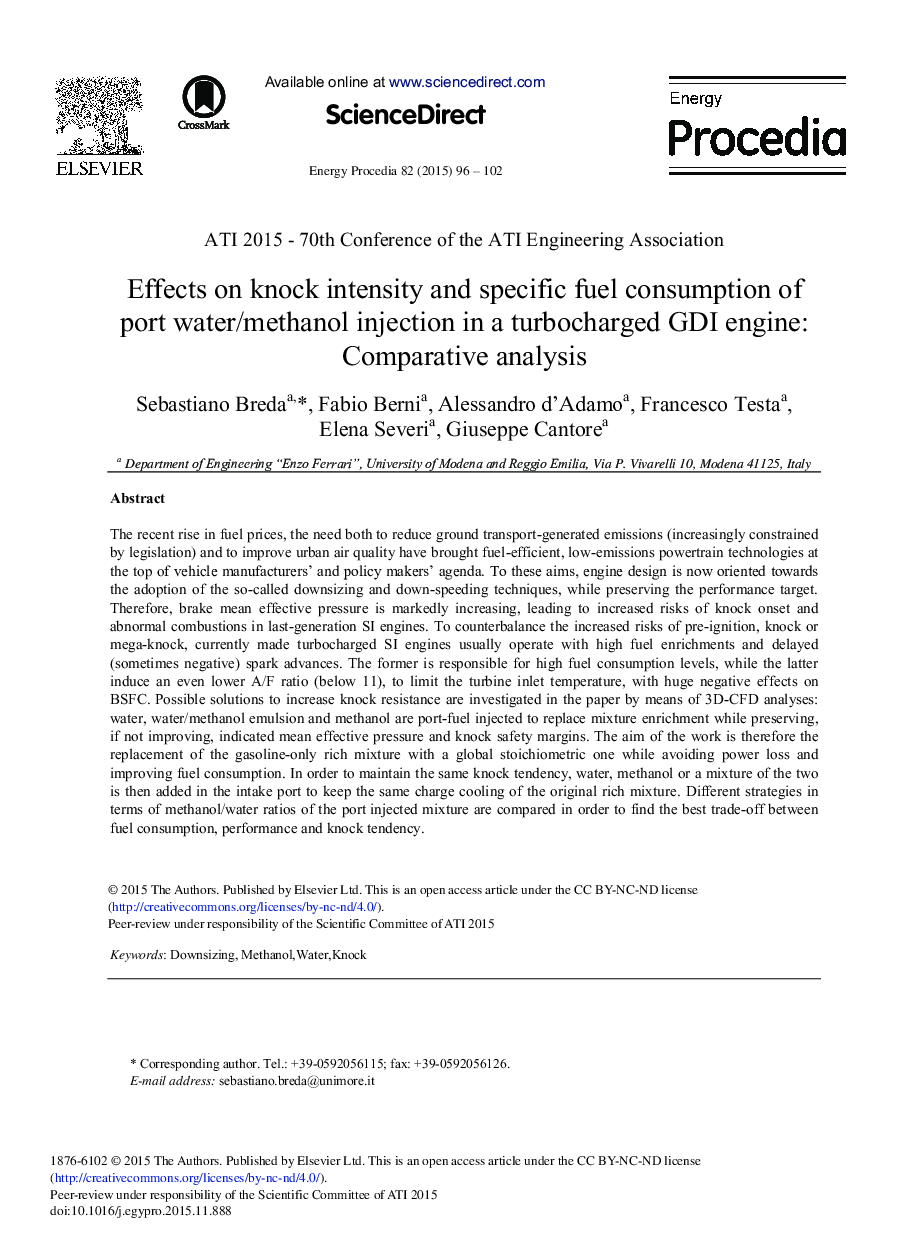| کد مقاله | کد نشریه | سال انتشار | مقاله انگلیسی | نسخه تمام متن |
|---|---|---|---|---|
| 1509044 | 1511153 | 2015 | 7 صفحه PDF | دانلود رایگان |

The recent rise in fuel prices, the need both to reduce ground transport-generated emissions (increasingly constrained by legislation) and to improve urban air quality have brought fuel-efficient, low-emissions powertrain technologies at the top of vehicle manufacturers’ and policy makers’ agenda. To these aims, engine design is now oriented towards the adoption of the so-called downsizing and down-speeding techniques, while preserving the performance target. Therefore, brake mean effective pressure is markedly increasing, leading to increased risks of knock onset and abnormal combustions in last-generation SI engines. To counterbalance the increased risks of pre-ignition, knock or mega-knock, currently made turbocharged SI engines usually operate with high fuel enrichments and delayed (sometimes negative) spark advances. The former is responsible for high fuel consumption levels, while the latter induce an even lower A/F ratio (below 11), to limit the turbine inlet temperature, with huge negative effects on BSFC. Possible solutions to increase knock resistance are investigated in the paper by means of 3D-CFD analyses: water, water/methanol emulsion and methanol are port-fuel injected to replace mixture enrichment while preserving, if not improving, indicated mean effective pressure and knock safety margins. The aim of the work is therefore the replacement of the gasoline-only rich mixture with a global stoichiometric one while avoiding power loss and improving fuel consumption. In order to maintain the same knock tendency, water, methanol or a mixture of the two is then added in the intake port to keep the same charge cooling of the original rich mixture. Different strategies in terms of methanol/water ratios of the port injected mixture are compared in order to find the best trade-off between fuel consumption, performance and knock tendency.
Journal: Energy Procedia - Volume 82, December 2015, Pages 96-102